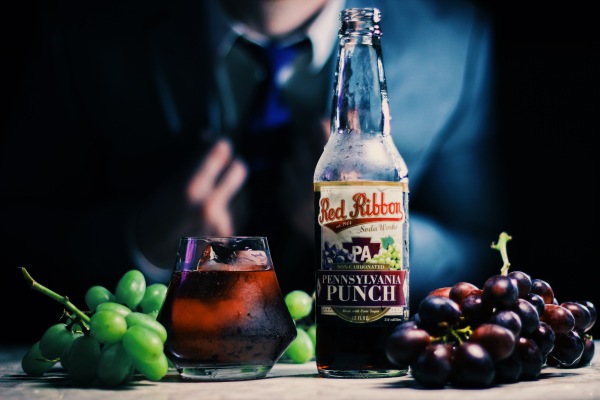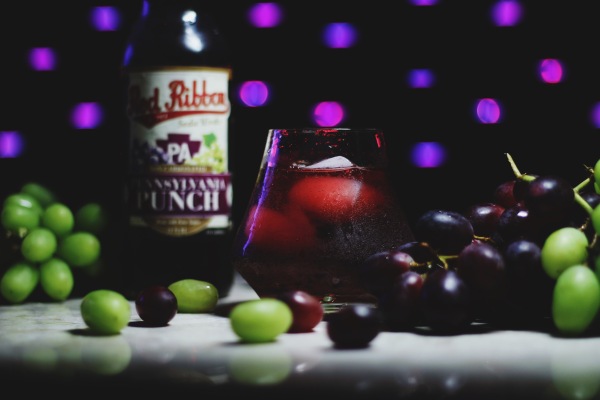History: “It really is a one-of-a-kind product.” About halfway through my conversation with Vito Gerasole, the self-proclaimed “Sultan of Soda” and owner of Natrona Bottling Company, he drops this line that raises my eyebrow about one of his sodas. The culprit? Pennsylvania Punch, a unique take on grape soda made with almost zero carbonation. Grape soda is classic – it’s one of the first flavors I think of when I conjure up images in my head of vintage flavors. And Natrona Bottling is one of the most vintage companies out there. They’ve been around since 1904. They still use pinpoint carbonation to put CO2 in their sodas, a time-consuming, expensive process involving dry ice that produces larger quantities of finer bubbles than traditional methods. It’s a company that does things the old-fashioned way. But here’s the thing: Natrona already makes a traditional grape soda pop. So why make another with almost no carbonation? The short answer: tradition. “The recipe dates all the way back to 1924,” Gerasole tells me. Gerasole himself is an agent of tradition. Back in 2010, Natrona Bottling was a company at the brink of bankruptcy with just $4,000 in its bank account. So with the help of an angel investor, Gerasole saved Natrona, Pennsylvania’s local soda bottler. “I’m a very nostalgic person,” he admits. There was no way he was getting rid of one of the company’s original flavors. He’s honest in telling us Pennsylvania Punch “is not my most popular flavor, but certainly one of my most unique.” Essentially what we have here is a a hybrid between grape soda and Concord grape juice with the latter being more of the goal. In fact throughout most of our conversation, Gerasole refers to Pennsylvania Punch as a “grape drink.” If the name sounds familiar to some of you in the northeast, you might be thinking of “Delaware Punch,” a drink similar in concept but made with high fructose corn syrup instead of cane sugar. We’re pretty excited to try this one just to figure out what’s going on here.
Where to get: Natrona Bottling Shop • Antiqology Store • Galco’s
Nose: Grape Sprees, artificial grape candy, liquid Dimetapp (don’t hate… I love that smell).
Taste: Sweet candy grape, smooth, sugary, very light carbonation. I see now why Gerasole referred to this as a “grape drink” because there’s hardly any carbonation in this soda. Just a touch of it on the finish. That said, the grape flavor is strong – more purple than green grape and more artificial and candy-like than actual grape juice. This is very grape-y and very sweet, but at the same time it’s also smooth and even kind of refreshing. The flavor is very much an old fashioned one. Fans of grape soda will enjoy.
Finish: Tangy purple grape flavor that lingers. This is actually where I taste the carbonation most. It kind of fizzes on your tongue at the very end of each sip.
Rating: What fun little grape soda… er, drink? Pennsylvania Punch tries to tow the line between grape soda and grape juice, but at the end of the day it’s sort of both. It has the sweetness and artificial grape flavor of a classic grape soda without most of the traditional carbonation. Despite the very sweet taste and the lack of bubbles, this is not syrupy. In fact, it’s pretty clean and easy to drink. I love the tanginess on the finish too as a nice little nuance. On a hot day by the pool, I could guzzle this like my uncles does a sixer of Michelob Light, except I won’t call my ex and then black out while my grill’s still on. Hope you aren’t reading this, uncle Dave. My one qualm with this soda is that it’s very, very sugary. I think kids will love it, but adults may be more apt to drink Natrona’s regular grape soda because carbonation typically pulls back that sugar factor a little bit. Pennsylvania Punch is a treat to be enjoyed on a warm day, but I probably couldn’t go past a bottle or two before needing insulin. That said, I’d definitely recommend it if you’re looking for a refreshing fruit soda or something to drink outside at a barbecue or pool session. Pennsylvania Punch: it’s familiar, but different. Only the best companies can successfully put new twists on something old, and in this case, Natrona’s been doing it since 1924. Go see what they’re all about.





